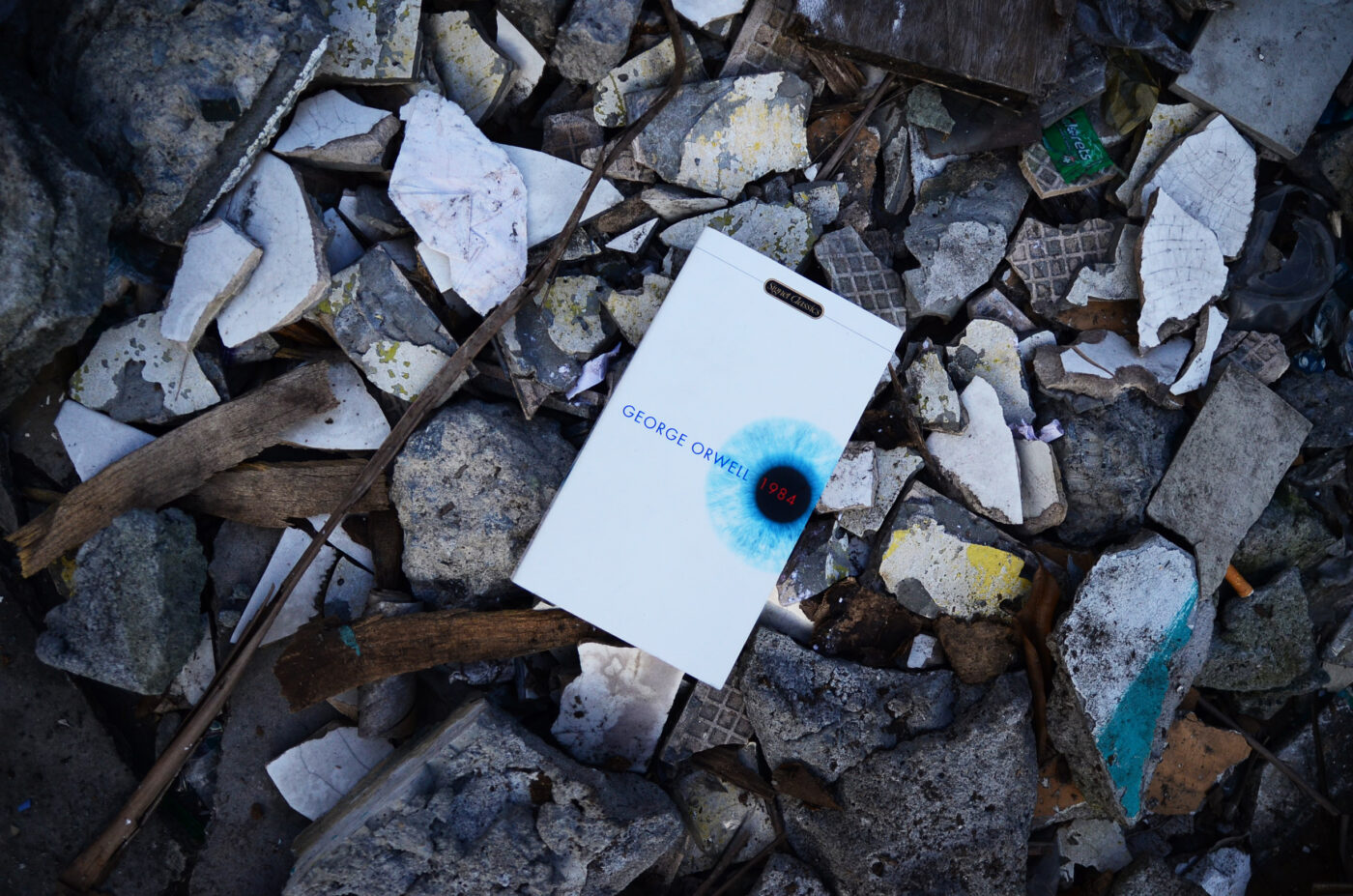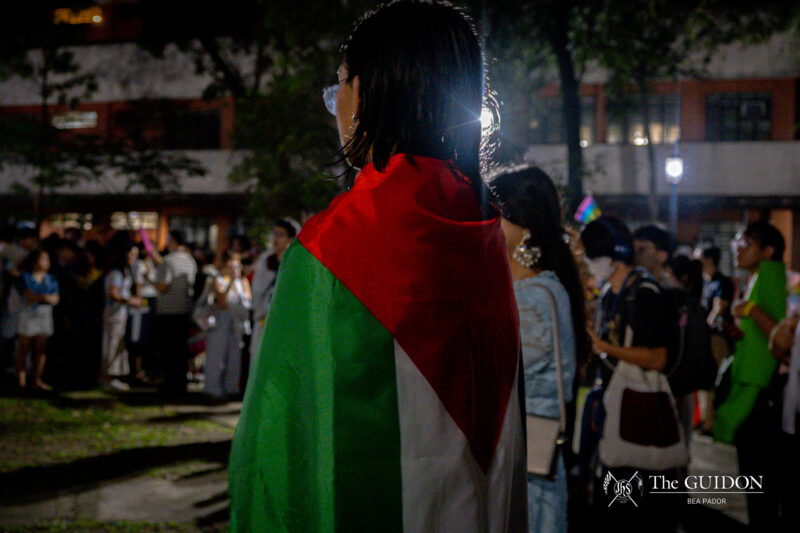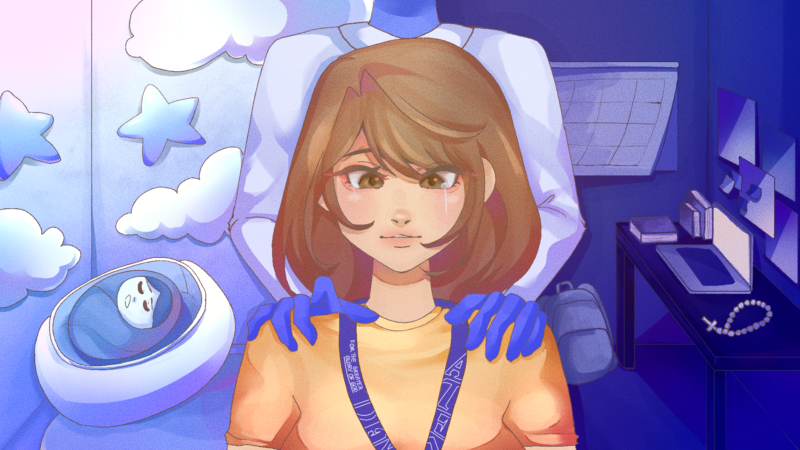“May the odds be ever in your favor,” a smiling Effie Trinket declares to a crowd of grim faces; the pink-haired administrator is about to draw the names of the next two tributes who will represent District 12 at the 74th Hunger Games. Along with tributes from the other districts, they will be thrown into an arena to fight until only one is left standing.
Their chances of survival are incredibly slim—the truth is, in nearly every dystopian plot, the odds are hardly in anyone’s favor. Oppressed by the system, the characters in these stories must rise to the occasion, challenge the norm and break free from their respective situations.
Various predicaments may make these heroes miserable, but the readers certainly aren’t. After all, their struggles make for an epic adventure. With the upcoming release of films like The Giver and The Maze Runner, dystopian fiction is again becoming the talk of the town. These film adaptations are a testament to the genre’s enduring relevance and its ability to leave us at the edge of our seats.
Past, present and future
According to Maria Mina, a part-time lecturer at the English Department who specializes in science fiction, the dystopian world is essentially a failed utopia. While utopian novels speculate as to what a perfect society might be like, dystopian novels paint a much bleaker picture of reality.
“We cannot point to a single text and say, ‘This is the beginning of dystopia,’ but we can do that with utopia,” Mina explains. Usually interpreted as a social satire, Thomas More’s iconic Utopia (1516) was the very first of its kind. It was set in a fictional island with its own unique set of customs, which contradicted those of European society at the time.
“On the surface, dystopia has the appearance of a utopia,” Mina explains. “The majority of the people who dwell in it embrace it, even when it opposes them.” Both feature a regulated society where the fate of the individual rests in the hands of the state. But while totalitarian rule breeds peace and order in a utopia, this desire for perfection can eventually lead to self-destruction in a dystopia.
Mina cites the release of H.G. Wells’ The Time Machine (1895) as a pivotal moment in dystopian literature because of its setting. Before it was published, most dystopian stories were set in a different place; Wells’ novella, on the other hand, is set in a distant time, following the Time Traveller nearly 30 million years into the future. He is shocked by what he finds because, as Mina claims, “[dystopia] is the nightmare of the future.”
The dystopia largely came about due to society’s disillusionment with science. Although science was first seen as a life-saving force, its reputation eventually took a turn for the worse, especially in the wake of two World Wars and the atomic bombings of Hiroshima and Nagasaki. “Science for us is, at best, a double-edged sword,” Mina says. “We think of it as something that’s far more likely to kill us than save us all.”
Jocelyn Martin, PhD, an assistant instructor at the English Department with a specialization in trauma studies, adds that the popularity of the genre grew more pronounced after the end of the Cold War, the crumbling of the Berlin Wall and the 9/11 attacks. In this modern day and age, the enemy can no longer be easily identified. “This global unease reveals itself in the interrogation of the status of the hero in recent films,” she adds.
Shifting arenas
Since The Time Machine, many authors have taken liberties with the who, what, when and where’s of dystopian fiction, but the narrative has mostly remained the same. In comparing classic and modern dystopian stories, Mina notes only a few main differences.
Whereas today’s dystopian works are much closer to fantasy, the classics were often allegorical in nature and served as cautionary tales against the current sociopolitical order. Some examples include George Orwell’s Nineteen Eighty-Four (1949), which depicted the dangers of voyeurism and cultural amnesia, and Ayn Rand’s Anthem (1938), which was based on the author’s experiences of Communist Russia. Katharine Burdekin’s Swastika Night (1937) even imagines a world where Adolf Hitler, having won World War II, is worshipped as a god.
“In classic dystopias, the protagonists are all adults,” says Mina. “It’s only recently that teenagers and even children have become the protagonists.” Billy Atienza, the English editor at Heights Ateneo, believes that this allows modern dystopian fiction to “focus more on the characters and the relationships between those characters.” For instance, romance plays a much bigger role in dystopian fiction nowadays, as seen in the relationship between Tris and Four in Divergent (2011) and the love triangle between Katniss, Peeta and Gale in The Hunger Games (2008).
With more and more dystopian novels beingtargeted towards young adults, the themes tackled by the genre have evolved as well. Rebellion against the status quo has been a constant in dystopian stories, but lately, Martin sees the youth as specifically being presented as “accessible heroes and figures of resistance.”
The advent of initiation rites, such as the Ceremony of Twelve in The Giver (1993) where Jonas is selected as the Receiver of Memory, was also a sign that dystopian novels were becoming more youth-centric. This plot device embodies the concerns of the young regarding their own rites of passage. “In the midst of a society which seeks to conform, they set out to discover, not only their identity, but their usefulness in the world,” she explains.
[blockquote author=”Billy Atienza (English editor, Heights Ateneo)” pull=”pullright”]”I think the general way of looking at dystopian worlds is, ‘If we keep going along this path, we’re going to end up here.'”[/blockquote]Mirror image
The immense popularity of the genre today says a lot about its readers and their preferences. Many enjoy the fantastic nature of dystopian fiction because they are able to go on a thrilling journey while remaining unscathed in reality. “There’s a pleasure in seeing it without actually having to experience it,” says Atienza.
When immersed in dystopian fiction, people find themselves equally awed and disturbed by what they see. The genre can also be thought provoking, forcing readers to face uncomfortable questions. For Atienza, “It’s interesting seeing how these societies function and how people act, even if it’s not a world you’d actually want to live in.”
Through the years, dystopian stories have served as a reflection of our collective fears and doubts. The conflicts present in dystopian fiction usually arise from greed, ambition and apathy, problems that exist in reality too.
For example, as a teenager, Ray Bradbury was horrified by how the Nazi Party suppressed subversive ideologies through book burnings. This later influenced the premise of one of his best novels, Fahrenheit 451 (1953), where books are outlawed and burned by firemen in a future American society.
The power of dystopian fiction lies in the fact that no matter how exaggerated it might seem, much of it is based on reality. “I think the general way of looking at dystopian worlds is, ‘If we keep going along this path, we’re going to end up here,’” explains Atienza. “We know it’s all fiction, but if it’s well-written enough and based on real concern, there’s that small part of you that thinks maybe it could happen.”
If dystopian novels were all doom and gloom, no one would bother to read them. Perhaps the secret to this genre’s enduring popularity, then, despite its commercialization over recent years, is the manner in which it reminds us of our common humanity.
More than just championing the values of diversity, freedom and courage, these stories remind us of our ability to survive and our role in constructing our future. As Martin observes, “[Dystopian fiction] campaigns for modern-day heroes… who will not anaesthetize themselves with the pains of memory but, with these and in spite of these, continue to hope and serve.







